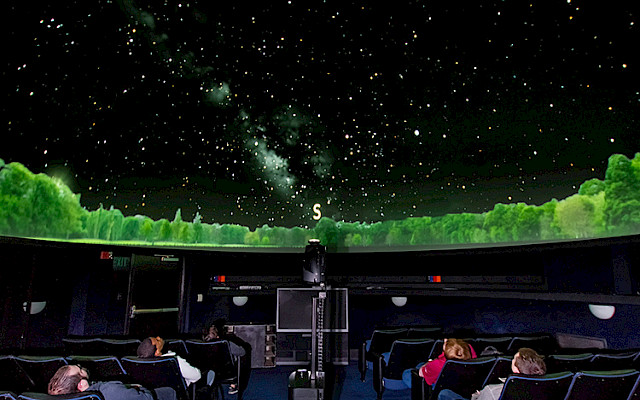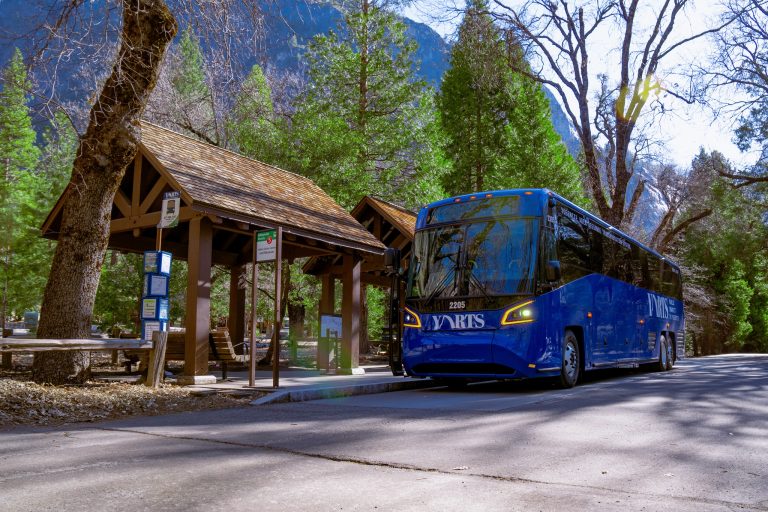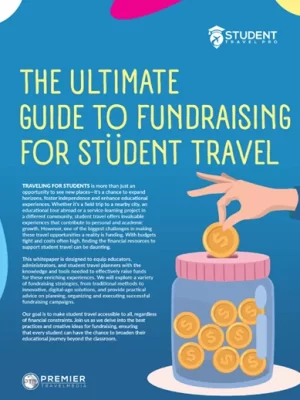Discover the top 10 national parks in the Southeastern US ideal for student trips and explore educational programs, hiking trails, and unique wildlife, perfect for school groups.
If you have students yearning for excitement outside the classroom, the Southeastern U.S. national parks have the perfect combination of education and adventure for learners of all ages. Students will be immersed in rich cultural and environmental histories, amazed by ancient structures that have endured for thousands of years, inspired by the complexities of ecosystems and unique environments, and intrigued by the potential impacts of humans on these very sites. Through ranger and self-guided tours and lessons, these iconic parks will host remarkable learning experiences not soon forgotten by their visiting students.
Great Smoky Mountains National Park, North Carolina & Tennessee
Located on the border between North Carolina and Tennessee, the most visited park in America offers plenty for students to learn about, notably its diverse wildlife and climate programs. The park has ranger-led field trips tailored for K-5, middle school, and high school students centered around the two states’ school curricula. There are also hiking opportunities and a nearby learning center for further learning.
Biodiversity at Great Smoky
- With over 19,000 documented species, Great Smoky is the most biodiverse park in the National Park System. While educational trips for students around this subject can take the form of hikes in more open areas in hopes of seeing creatures like elk, black bears, and turkeys firsthand, there are also plenty of ranger-led programs that dive deeper into the local inhabitants of the park. Younger students have the opportunity to investigate food webs, learn about the park’s trees, and explore animal and plant behaviors and adaptations. Middle and high school students get the chance to observe smaller organisms and microorganisms like salamanders, lichens, macroinvertebrates, and tardigrades, learning how these beings interact from the trees to the streams of the park.
- The Appalachian Highlands Science Learning Center is another handy resource with on-site programs for middle and high schoolers, focusing on parts of the environment like soil and water as well as the organisms living within these places.
Ozone and climate studies at Great Smoky
- Targeted toward middle and high school students, Great Smoky also offers ranger programs covering ozone and climate change. Because ground-level ozone levels are generally worse at higher elevations, students will learn how ozone pollution affects the land and how it is monitored. With regard to the available climate program, students will get to collect tree phenology data for an ongoing study tracking climate and weather change in the park.
Everglades National Park, Florida
The biggest subtropical wilderness in the country, this Southeastern U.S. national park’s unique landscape is found at the transition of tropical temperate climates and serves as a haven for migratory birds and a number of endangered animals, including the Florida panther, manatees, and American crocodiles. The park has supplied education opportunities since 1971, and today it hosts several great programs, primarily for grades 4-6, for students looking to explore such a distinctive environment.

Exploring a subtropical environment at Everglades
- Through ranger-provided field trips that revolve around the ecosystem, fourth graders will get to go on a tram tour followed by a hike to an observation tower while fifth and sixth graders travel through four different Everglades habitats. Everglades National Park also has climate change activities for fifth and sixth graders that feature accessible ways for students to learn about greenhouse gasses, the 2008 carbon budget, and how sea level change impacts subtropical coastlines.
- The Everglades National Park Institute, a partner of the park, also provides several guided opportunities. Though not specifically for school groups, many of these options are still student-friendly and can range from wet walks through lush forests to traveling around the park while learning about native plant species and balancing the park’s environment with human history.
Wildlife at Everglades
- Everglades’ ranger-guided offerings also include programs specifically focused on the park’s wildlife. Depending on the area of the park they’re in, students can go on a bird walk to catch sight of up to three hundred plus bird species, attend a program about manatees, crocodiles, osprey and any other local animals that appear, or go on a brief journey to discover various native tree species.
Mammoth Cave National Park, Kentucky
While this park is full of scenic hills and deep river valleys, its main draw is certainly the world’s longest-known cave system. Great for students of any age, park tours can include a variety of different lessons inspired by the caves and the park’s ecosystem, turning a visit of sheer amazement over these aged formations into one supplemented with enticing educational value.

Speleology at Mammoth Cave
- Guided cave tours have been consistently popular educational trips for visiting students and are sure to mesmerize many more classes to come. Mammoth Cave has over ten cave tours to choose from, allowing students to adventure through tunnels already used by humans for thousands of years, learn about cave formations that have developed over millions of years, witness artifacts and monuments left behind by nineteenth-century tourists, or even traverse a sinkhole.
- For slightly older students, Beneath Your Feet is a program created for people to learn more about the caves directly below them as they explore the park topside. Fourteen locations along trails and walking paths will have images and information about whatever cave you are standing above, plus QR codes will be listed so you can access additional lessons from park rangers.
Environmental education at Mammoth Cave
- Beyond the attraction of the park’s historic caves, rangers also have a number of programs about the wider environment for students to choose from. Nature Tracks for Kids, a standout for younger students, will have visitors learn about plants, animals, cave forming, and the fine balance of the parks’ ecosystem. Other ranger programs discuss similar topics at the visitor center exhibit area or the relationship between the surface and the subsurface.
Congaree National Park, South Carolina
Congaree National Park is known for its sweeping biodiversity, giant trees, and being the largest intact expanse of old-growth bottomland hardwood forest in the southeast. Although ranger-led tours are not currently available, hiking on park trails, lesson plans for grades 3-5, and more on the park’s history will be more than enough to entertain your students and engage them with this remarkable floodplain.

Ecology at Congaree
- Congaree’s hiking trails are a perfect educational trip for students, allowing them to take in the many facets of the park’s environment. Ranging from easy to difficult, these trails can showcase deer and wild turkeys, Cedar Creek’s otters and wading birds, a wide diversity of tree species, including loblolly pines and towering oaks, stretches of both young and old forests, and the Congaree River, one of the two primary rivers that carries nutrients and sediments to help sustain and grow the park. Witnessing the flourishing biodiversity of the park can help students appreciate the relationships between these environmental elements.
- The park’s lesson plans for students in grades 3-5 encourage further learning about Congaree’s ecosystem, with exercises that highlight bird ecology, tree identification, and Leave No Trace, the national program that promotes the ways in which visitors can healthily conserve the land they are visiting.
History at Congaree
Named after the Congaree people, archaeological evidence suggests that humans have lived in this region for at least 10,000 years. The park has seen the Congaree people wiped out by European disease, hosted non-native animals and crops implemented into the ecosystem, served as a safe haven for slaves, and avoided losing all of its giant trees to the lumber industry. Learning about Congaree’s past human presence prior to or during a visit can push students to admire and lament what the area has seen while also thinking more actively about how much this land has been changed due to these events.
Ocmulgee Mounds National Historical Park, Georgia
At Ocmulgee Mounds, students can experience over 12,000 years of continuous human history. Many different American Indian cultures lived on this land, and around 900 CE, mounds were built for the elite that still exist today. This park has accessible field trips for students of all ages, and any ranger-instructed portions of a park field trip can be adjusted by grade level, starting at second grade.

Indigenous history at Ocmulgee Mounds
- The park’s field trips are great educational trips for students to immerse students in the area’s Indigenous past. Inside the visitor center rotunda, park rangers will give an orientation that can be followed by a film about the park’s history. Students will also get a chance to view 2,000 displayed artifacts dating from 10,000 BCE all the way to the 1800s.
- Teachers and chaperones will take over outside of the visitor’s lodge, where they can lead students to the Earth Lodge, a ceremonial council chamber that will give learners a notion of architectural practices during the Mississippian time period. The park has eight miles of trails beyond this structure, but many will choose the one-mile trip to the Great Temple Mound, a five-story structure that can be climbed for a view of the Funeral Mound and downtown Macon.
Russell Cave National Monument, Alabama
This monument has one of the most cohesive records of prehistoric cultures in the Southeast due to a large amount of artifacts representing over 10,000 years of use that were all found here in the 1950s. While the Russell Cave Museum and its artifacts are in the process of relocating, the park also offers activities for third through fifth graders to immerse themselves in that revolve around the area’s vibrant wildlife.

Wildlife at Russell Cave
- This park may only be 310 acres, but it houses over 130 varieties of birds and more than 30 kinds of insects, amphibians, and reptiles among its wildlife population. Traveling around Russell, students may catch sight of creatures like deer, beavers, muskrats, and even snakes. Just the prospect of reptiles along with insects and arachnids being present can foster conversation about how these commonly avoided animals actually play important roles in an ecosystem like that of Russell Cave, from snakes keeping the rodent population under control to assassin bugs serving as energy to larger consumers.
- The park’s student activities continue these ideas, as one features a nocturnal member of Russell Cave, the owl, and discusses how the park’s three different species play an important part in local food chains and food webs. The other focuses on the role frogs play in aiding the environment and how pollutants harming these animals can be remedied. Both exercises further show students how seemingly simple resident creatures are actually vital to keeping this Southeastern U.S. national park healthy.
Hot Springs National Park, Arkansas
From ancient thermal springs to towering bathhouses, Hot Springs National Park is packed with lessons geared towards students from elementary to high school. As the park’s hot springs have been iconic for many years now, students will learn all about the deeper history that accompanies these structures along with their current influence on the ecosystem.

Environmental Science at Hot Springs
- Many of the park’s field trips for students accent the area’s unique hot springs and how they affect their surrounding environment. Students can gain knowledge about organisms that are able to live in extreme heat conditions, how the almost 4,000-year-old spring water becomes hot, the ways in which the park’s water interacts with rock formations, and the importance of a healthy ecosystem for the thermal springs’ own wellbeing.
History and Medicine at Hot Springs
- Other park field trips highlight the historical relevance the hot springs have had over time. One program for middle schoolers takes place in the iconic Fordyce Bathhouse Museum, where students will delve into the lives of people who came to Hot Springs for healing throughout a good deal of the twentieth century, while another for elementary schoolers seeks to understand how these bathhouses influenced America’s broader medical practices.
- Hot Springs showcases several collections and archives for students to observe as well. The natural history portion has wildlife specimens, a herbarium with some of the park’s plant species, and mounted insects among its contents, while the cultural collections have archeological materials, field records, pieces connected to the bathing industry and early settlement of Hot Springs, old architectural objects, and an archival section. The archives are full of bathhouse records, oral histories, postcards and more, giving students a truly personalized view into another time.
Shenandoah National Park, Virginia
From the waterfalls and fields of wildflowers to the deer, black bears and songbirds, this Southeastern U.S. national park is teaming with life and energy for your students to dive into. Kids from elementary to high school will have the chance to check out programs all centered around the breathtaking environment, particularly its inhabitants, geological make-up, and rich history.

Wildlife at Shenandoah
- Shenandoah has numerous field trips centered around the park’s wildlife for a broad span of ages. Rangers lead programs about the adaptations plants and animals use for survival, the roles plants and animals play in a larger ecosystem, and the ways climate change has contributed to endangering the Shenandoah salamander. First graders can also take part in a self-guided field trip that will have them investigate how wildlife is provided for and protected by the environment they live within.
Earth Sciences at Shenandoah
- The park’s self-guided curriculum also includes five lesson plans for middle and high school students to explore earth sciences. Covering subjects like hydrology, water resources, landforms, life forms, and geology, these onsite lessons are accompanied by both pre- and post-visit activities to enhance this in-depth opportunity. A few ranger-guided trips are also available to highlight earth science, with one specific program centered around geology and its importance in the earth’s make-up as well as our lives.
History at Shenandoah
- Fit for grades 4-10, Shenandoah has a self-guided field trip that emphasizes the park’s role in Virginia and the United States’ histories. Students will explore historical, ecological, economic, and cultural elements of the park throughout the years while exploring different historical perspectives and connecting the past to the present.
New River Gorge National Park, West Virginia
At New River Gorge National Park, one of the oldest rivers in North America runs northward through deep canyons. With over 70,000 acres of land, this educational trip for students from third grade through high school will allow them to explore the park through both self-guided and ranger-led programs and learn about the environmental features and history that have formed the New River Gorge present today.

New River Gorge National Park, West Virginia (cc)Don Sniegowski (270)321-1268
Biodiversity and Nature at New River Gorge
- Teachers have the option to lead their students in the Citizen Science Program. The subject material, which centers around species interaction, invasive species, climate change, ecosystem dynamics, and endangered species preservation, will have students participate in activities linked to active engagement, discussion, taking measurements, and more. This curriculum can also be modified based on the age of the visiting class.
- Hiking is a fantastic way for students to view the greater environment during their visit. Different trail areas showcase the park’s rock formations, cascading waterfalls, and pools and include overlooks for stunning views of the gorge. Ranger-led programs are also available if you’d like to learn more about the parts of the park you’re exploring.
History at New River Gorge
- The park has multiple opportunities for students to engage with its history. Park hikes include the Nuttallburg trails that feature an old coal mining town or the Thurmond Walks program with a ranger who guides you through a once lively railroad town. In a similar vein, the African American Heritage Tour is another self-guided option that uses an app to take visitors around seventeen historic sites, spotlighting the many black coal miners, railroad workers, and community members who have influenced the region. Additionally, viewing the park’s preserved farms can provide students with an idea of the subsistence farming done by early settlers of the area.
Biscayne National Park, Florida
Biscayne National Park features beautiful islands, coral reefs, and evidence of shipwrecks and prehistoric human populations. Biscayne’s curriculum is primarily aligned with fourth-grade standards, and there are two great programs for students to learn about the park’s marine ecosystem and the way in which humans can relate to it. For any high school classes looking to make the trip, there’s also an overnight option to immerse older students in the park’s scenic nature.

Marine Science at Biscayne
- This Southeastern U.S. national park’s most popular program, Biscayne Explorer, sees the park’s classroom turned into a plankton lab as fourth graders learn about topics like plankton, algae, water quality, and current fishery research. They’ll also get to identify microscopic life in a drop of water and learn about the park’s four main ecosystems through dioramas at the visitor center.
Human impact at Biscayne
- Biscayne Voyager involves fourth graders riding across the bay on a park vessel to Boca Chita Key, during which they will learn about the park’s history since the Ice Age and form connections between the human story and the marine ecosystem. Additionally, students will get to work in small groups at several stations, check out a lighthouse, and take a natural walk around the island.
- Biscayne also has an overnight program geared towards high schoolers that encourages a greater comprehension and acknowledgment of our natural world. When students, sans phones, aren’t setting up tents or helping with chores, park staff will lead programs like paddling, fishing, bird washing, and botany, all in the park’s outdoor classroom! Teachers will have a few hours for any lessons or activities they’d like for their students to engage with as well.
By Spencer Hatcher
Updated by Ben Spielman October 31, 2024














